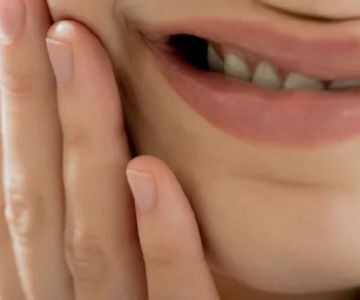Is Oral Lichen Planus an Autoimmune Disease?
Oral lichen planus (OLP) is a chronic condition that affects the mucous membranes in the mouth. It is known for causing white patches, redness, and sores in the mouth, making it uncomfortable for those who experience it. But is oral lichen planus considered an autoimmune disease? In this article, we’ll explore the relationship between oral lichen planus and autoimmune diseases, delve into its symptoms, causes, and possible treatments, and answer some common questions related to this condition.
What is Oral Lichen Planus?
Oral lichen planus is a non-contagious condition that affects the lining of the mouth. It can lead to painful lesions, often appearing as white or red patches on the cheeks, gums, tongue, and the inside of the lips. These lesions may cause discomfort, especially when eating or speaking. In some cases, the condition can also cause blisters or open sores, making it harder for individuals to enjoy daily activities. Although OLP is primarily known for its effects in the mouth, it can also impact other areas of the body, such as the skin and nails, in some cases.
Is Oral Lichen Planus an Autoimmune Disease?
Oral lichen planus is indeed classified as an autoimmune disease. It occurs when the immune system mistakenly attacks the tissues in the mouth, leading to inflammation and the formation of lesions. The immune system typically works to protect the body from harmful invaders like bacteria and viruses. However, in autoimmune diseases like OLP, the immune system becomes confused and starts attacking healthy tissue, causing damage.
While the exact cause of oral lichen planus is not fully understood, it is believed that various factors, including genetics, stress, medications, and certain infections, can contribute to the onset of the disease. Some researchers also suspect that oral lichen planus may be triggered by an abnormal immune response to substances in the environment, such as dental materials or foods.
Symptoms of Oral Lichen Planus
The symptoms of oral lichen planus can vary from person to person, but common signs include:
- White patches or streaks in the mouth
- Red, swollen, or inflamed areas
- Painful sores or ulcers that may bleed
- Sensitivity or discomfort while eating spicy or acidic foods
- Burning sensations, especially on the tongue or gums
In some cases, OLP may not cause any noticeable symptoms, and individuals may only notice small changes in their oral health during routine dental checkups. However, for others, the discomfort and pain from the lesions can significantly impact their quality of life.
How is Oral Lichen Planus Diagnosed?
Diagnosing oral lichen planus typically involves a thorough examination of the inside of the mouth by a dentist or doctor. In some cases, a biopsy may be required to confirm the diagnosis. During a biopsy, a small sample of tissue is taken from one of the lesions and examined under a microscope. This can help rule out other conditions and provide a clearer picture of the disease's progression.
Treating Oral Lichen Planus
Although there is no cure for oral lichen planus, treatment options are available to help manage the symptoms and reduce inflammation. The goal of treatment is to alleviate discomfort and prevent the condition from worsening. Common treatment options include:
- Topical corticosteroids: These are the most commonly used medications for oral lichen planus. They help reduce inflammation and control symptoms.
- Oral medications: In some cases, doctors may prescribe oral medications such as corticosteroids or immune-suppressing drugs to manage severe symptoms.
- Topical calcineurin inhibitors: These are non-steroid treatments that can help reduce inflammation in people with OLP.
- Good oral hygiene: Maintaining a regular oral hygiene routine is crucial for managing OLP. Brushing and flossing regularly can prevent infection and reduce discomfort.
- Dietary changes: Avoiding spicy, acidic, or hard foods can help reduce irritation in the mouth. Some individuals also find relief from avoiding foods that contain certain allergens or chemicals.
Living with Oral Lichen Planus
Living with oral lichen planus can be challenging due to the discomfort and the chronic nature of the condition. However, with proper care and treatment, most individuals with OLP can lead normal, active lives. Managing stress, avoiding trigger foods, and maintaining good oral hygiene can help reduce flare-ups and improve overall oral health.
Real-Life Stories: Coping with Oral Lichen Planus
Many people with oral lichen planus share stories of how they learned to cope with the condition. One individual, Sarah, shared that her diagnosis of OLP came after years of struggling with painful mouth sores. She initially found it difficult to enjoy meals or even talk comfortably. However, after trying various treatments recommended by her dentist, including corticosteroid creams and changes in her diet, Sarah found relief and was able to manage the symptoms better. Like many others with OLP, Sarah’s story highlights the importance of seeking timely medical advice and exploring different treatment options.
Another person, John, shared how stress played a major role in triggering flare-ups of his OLP. After recognizing this, John began practicing relaxation techniques such as yoga and meditation to help manage his stress levels. This, along with regular visits to his dentist for checkups, significantly improved his condition.
Conclusion
Oral lichen planus is indeed an autoimmune disease, as it results from the immune system mistakenly attacking the tissues in the mouth. Although the condition can cause discomfort and affect one’s quality of life, treatment options are available to help manage symptoms. With the right care and lifestyle changes, individuals with OLP can live relatively normal lives. If you suspect you have oral lichen planus or are experiencing symptoms, it's essential to seek advice from a healthcare professional to receive the appropriate diagnosis and treatment.
For more information on oral health and treatments for conditions like oral lichen planus, visit [Chinese Food] for helpful tips and recommendations.



 Westgate Dental Arts3.0 (2 review)
Westgate Dental Arts3.0 (2 review) Coventry Family Dental4.0 (247 review)
Coventry Family Dental4.0 (247 review) Familia Dental3.0 (1028 review)
Familia Dental3.0 (1028 review) Dr. Daniel S. Fife, DDS4.0 (31 review)
Dr. Daniel S. Fife, DDS4.0 (31 review) Dentistry At Suburban Square: Michael I. Wollock, DMD4.0 (1228 review)
Dentistry At Suburban Square: Michael I. Wollock, DMD4.0 (1228 review) Comfort Care Dental4.0 (1156 review)
Comfort Care Dental4.0 (1156 review) The Importance of Oral Health Education During Pregnancy for a Healthy Pregnancy
The Importance of Oral Health Education During Pregnancy for a Healthy Pregnancy Why Skipping Dental Checkups Can Lead to Bigger Oral Health Problems
Why Skipping Dental Checkups Can Lead to Bigger Oral Health Problems Best Tips for Brushing Your Teeth Properly for Healthy Gums: Essential Techniques for Oral Health
Best Tips for Brushing Your Teeth Properly for Healthy Gums: Essential Techniques for Oral Health Advantages of Porcelain Dental Restorations
Advantages of Porcelain Dental Restorations How Can Diabetes Cause Tooth and Gum Problems? Preventing and Managing Oral Health Issues
How Can Diabetes Cause Tooth and Gum Problems? Preventing and Managing Oral Health Issues Healthy Habits for Promoting Good Oral Health and Hygiene: Tips for a Healthy Smile
Healthy Habits for Promoting Good Oral Health and Hygiene: Tips for a Healthy Smile